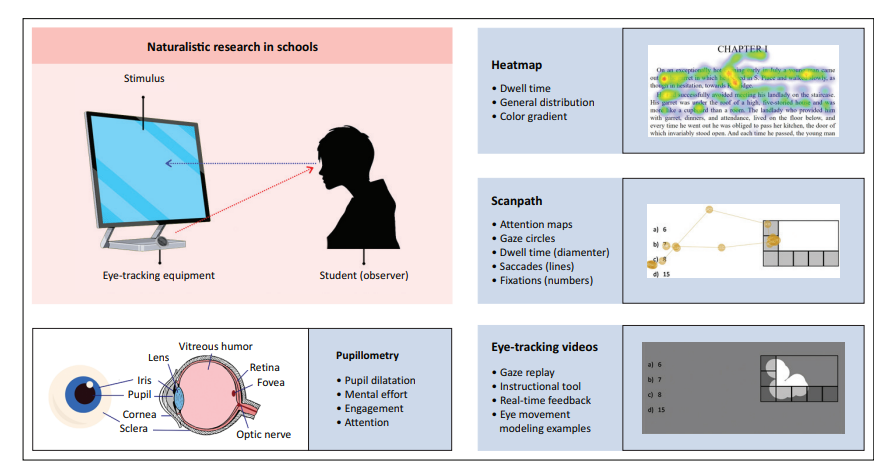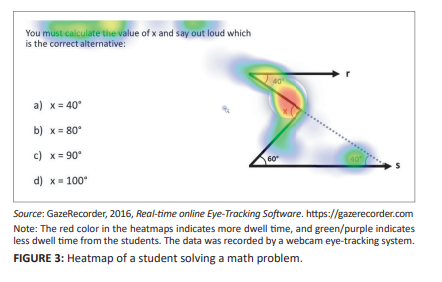Background: Many students struggle with mathematics difficulties, such as arithmetic
problem-solving, intuitive geometry concepts and learning disabilities. Currently, there is an
increasingly interesting in applying neuroscientific research paradigms to elucidate
mathematical thinking and neural mechanisms that underlie academic achievement. On this
matter, eye-tracking technology has been a valuable option for educational research. It provides
a non-invasive and real-time measurement of participants’ eye movements and pupil sizes
during cognitive tasks. Moreover, the eye-tracker device is portable, allowing more ecological
educational experimentations.
Aim: Our main goals are to provide an overview and different opportunities for educational
eye-tracking research to investigate mathematical thinking at schools.
Setting: This study was conducted in Sao Bernardo do Campo, Sao Paulo, Brazil.
Methods: This is a perspective article that briefly introduces the eye-tracking technique and
describes its possible use in educational research.
Results: We present the popular measures and the trends of this technology that could enable
educational practitioners and scientists to apply the eye-tracking system to benefit teaching
and learning mathematics in naturalistic research.
Conclusion: The eye-tracking provides insights for innovative approaches to promote
evidence-based practices and new interventions through self-directed learning and
metacognition skills that could be helpful in mathematics education.
Contribution: This article provides insight into eye-tracking system utility in educational
research regarding the mathematics teaching–learning process.
https://journals.co.za/doi/abs/10.4102/sajce.v13i1.1204

